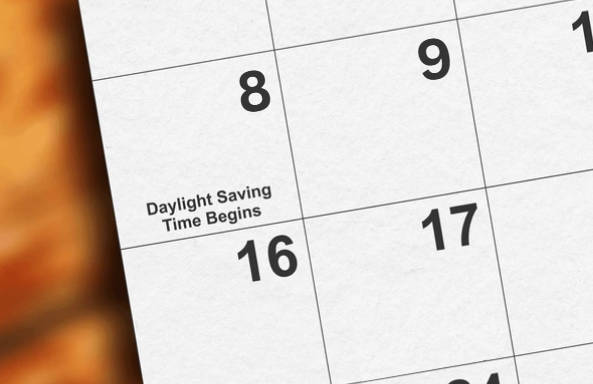
Ultima Markets App
Trade Anytime, Anywhere
Important Information
This website is managed by Ultima Markets’ international entities, and it’s important to emphasise that they are not subject to regulation by the FCA in the UK. Therefore, you must understand that you will not have the FCA’s protection when investing through this website – for example:
- You will not be guaranteed Negative Balance Protection
- You will not be protected by FCA’s leverage restrictions
- You will not have the right to settle disputes via the Financial Ombudsman Service (FOS)
- You will not be protected by Financial Services Compensation Scheme (FSCS)
- Any monies deposited will not be afforded the protection required under the FCA Client Assets Sourcebook. The level of protection for your funds will be determined by the regulations of the relevant local regulator.
Note: Ultima Markets is currently developing a dedicated website for UK clients and expects to onboard UK clients under FCA regulations in 2026.
If you would like to proceed and visit this website, you acknowledge and confirm the following:
- 1.The website is owned by Ultima Markets’ international entities and not by Ultima Markets UK Ltd, which is regulated by the FCA.
- 2.Ultima Markets Limited, or any of the Ultima Markets international entities, are neither based in the UK nor licensed by the FCA.
- 3.You are accessing the website at your own initiative and have not been solicited by Ultima Markets Limited in any way.
- 4.Investing through this website does not grant you the protections provided by the FCA.
- 5.Should you choose to invest through this website or with any of the international Ultima Markets entities, you will be subject to the rules and regulations of the relevant international regulatory authorities, not the FCA.
Ultima Markets wants to make it clear that we are duly licensed and authorised to offer the services and financial derivative products listed on our website. Individuals accessing this website and registering a trading account do so entirely of their own volition and without prior solicitation.
By confirming your decision to proceed with entering the website, you hereby affirm that this decision was solely initiated by you, and no solicitation has been made by any Ultima Markets entity.
I confirm my intention to proceed and enter this website Please direct me to the website operated by Ultima Markets , regulated by the FCA in the United KingdomDaylight Savings 2026: Key Dates and Time
As daylight savings 2026 approaches, clock changes trip people up every year. Flights, cross-border meetings and even school drop-offs can all slip by an hour if you are not watching the calendar. If you are a trader, you know that clock changes do not move the markets. They move your clock relative to the markets. That shift alters the London and New York overlap, the timestamps on economic releases like NFP and CPI, FX rollover around 17:00 New York, and even your platform’s daily candles if your broker aligns to the New York close.
In this article, we cover the daylight savings 2026 date and times by region, highlight the short mismatch windows that matter for liquidity, and translate each change into practical actions for your trading routine.

Why Does Daylight Saving Time Exist?
The original idea was simple. If societies are awake when there is more natural daylight, we can reduce artificial lighting, make better use of the evening sun, and possibly improve public welfare and commerce. Versions of the concept were discussed in the 18th and 19th centuries, but the modern push came from late-1800s and early-1900s advocates who wanted longer light in summer evenings and potential energy savings.
Two names often appear in the early story. In New Zealand, entomologist George Vernon Hudson proposed seasonal clock shifts in 1895 to extend daylight for evening activities. In Britain, builder William Willett campaigned in 1907 with his pamphlet The Waste of Daylight. Their efforts shaped public debate even though large-scale adoption came later.
Daylight Savings 2026: Date for Each Region
Below we move from history to application. The focus is on what changes for your trading calendar in 2026, where the timing traps are, and how to prepare.

United States and Canada
For daylight savings 2026, the United States moves clocks move forward on Sunday 8 March 2026 and back on Sunday 1 November 2026 at 02:00 local time. Most U.S. states observe these dates. Hawaii, most of Arizona and the U.S. territories stay on standard time all year. Canada generally follows the same March and November pattern, with local exceptions such as parts of Saskatchewan and Yukon. From a trading perspective, U.S. data releases like NFP at 08:30 Eastern and FOMC statements at 14:00 Eastern shift by one hour in UTC terms from 8 March.
United Kingdom and European Union
The UK and EU switch on coordinated, UTC-based times so countries change together. Europe changes later in spring and earlier in autumn than the United States. In 2026 clocks go forward on Sunday 29 March and go back on Sunday 25 October. The UK follows the same timetable. This split with the United States creates two short windows when the London and New York sessions no longer overlap at their usual local times.
Australia
Australian observing states and territories of New South Wales, Victoria, South Australia, Tasmania and the Australian Capital Territory end the 2025–26 season on Sunday 5 April 2026, then start the 2026–27 season on Sunday 4 October 2026. Queensland, Western Australia and the Northern Territory do not use daylight saving, which is a frequent source of confusion for domestic travel and for timing the Sydney session from abroad.
New Zealand
New Zealand ends daylight saving on Sunday 5 April 2026 and starts again on Sunday 27 September 2026, following the long-standing rule of first Sunday in April and last Sunday in September. These dates are published by the New Zealand Government. If you follow RBNZ events, note how these flips change your local clock relative to Wellington and to the U.S. and European sessions.
Israel
Israel starts daylight saving on Friday 27 March 2026 and ends on Sunday 25 October 2026. The Friday start is unusual. Teams that expect a Sunday move often miss this nuance, so place a reminder if you coordinate with Tel Aviv or Jerusalem.
Morocco
Morocco keeps UTC+1 through most of the year but rolls clocks back by one hour for Ramadan. In 2026 the rollback occurs on Sunday 15 February with a return to UTC+1 after Ramadan. If you route flights or meetings through Casablanca or Rabat around these dates, double-check itineraries.
Mexico
Mexico abolished nationwide daylight saving in 2022. The exception is Baja California and designated U.S. border municipalities, which still align with the U.S. calendar for economic reasons. Border traders and supply chains should verify each municipality, since rules differ inside some states.
Places that remain on one time all year
A few countries stay on permanent time and therefore do not change clocks. Turkey and Jordan remain on UTC+3 year-round, and Brazil discontinued DST in 2019. Keep these in mind.
The Two Mismatch Windows That Change Your Rhythm
Because the United States and Europe change on different weekends, the London–New York overlap shifts temporarily. These are the two daylight savings 2026 traps you should mark now:
Spring 2026 mismatch
- United States moves on 8 March
- Europe moves on 29 March
- From Monday 9 March to Friday 27 March, the overlap starts one hour earlier for Europe-based traders. U.S. events appear an hour earlier in European local time.
Autumn 2026 mismatch
- Europe moves on 25 October
- United States moves on 1 November
- From Monday 26 October to Friday 30 October, the overlap starts one hour later for Europe-based traders. European events appear an hour later to U.S.-based traders.
If you trade the U.S. cash open, London–New York momentum or scheduled data drops, mark these weeks now. Liquidity texture and volatility can feel different when the overlap shifts.
What The Shifts Mean For Your Day-to-Day
Session timing you will notice
- NYSE and Nasdaq run 09:30 to 16:00 New York. In UTC terms this window moves one hour earlier after 8 March and one hour later after 1 November.
- The London Stock Exchange runs 08:00 to 16:30 London. The coordinated European switches on 29 March and 25 October adjust how that lines up for non-European traders.
- CME Globex publishes in Central Time. Your UTC conversion changes when the United States moves.
Economic releases and central banks
- U.S. marquee data prints at 08:30 Eastern and FOMC statements at 14:00 Eastern. After 8 March, the UTC equivalent shifts one hour earlier.
- ECB, Eurostat and the Bank of England follow the European clock. During 9 to 27 March their times appear one hour later to U.S.-based traders.
- RBA, RBNZ, BoJ, BoC and SNB anchor to their domestic clocks, so your local view moves around their regions’ changes.
FX rollover, swaps and dividends
- Many brokers peg end-of-day to 17:00 New York. When the United States moves, your swap line arrives one hour earlier or later in UTC terms. Strategy rules that key off “end of day” should reference market time rather than your wall clock.
Broker server time and charts
- To maintain five daily candles aligned to the New York close, many MT4 and MT5 brokers shift server time from GMT+2 in winter to GMT+3 in summer. If your rules reference specific hours, recheck conditions after each change and rerun time-filtered backtests with the correct daylight saving profile.
Conclusion
The spring‑forward change effectively costs one hour of sleep. Many people feel temporary sleep deprivation and mood dips as the body adjusts. The fall‑back change brings brighter mornings but earlier darkness in the evening, which can influence mood in susceptible individuals. In both cases, the biannual time change disrupts the body’s internal clock circadian rhythm and that can nudge reaction time, focus, and risk appetite right when markets are moving on a new schedule.

As daylight savings 2026 arrives, traders should also pay attention to their health. Keep your physiology and your trading clock steady, and the sessions will take care of themselves.
Disclaimer: This content is provided for informational purposes only and does not constitute, and should not be construed as, financial, investment, or other professional advice. No statement or opinion contained here in should be considered a recommendation by Ultima Markets or the author regarding any specific investment product, strategy, or transaction. Readers are advised not to rely solely on this material when making investment decisions and should seek independent advice where appropriate.












